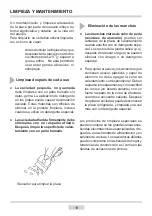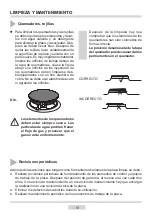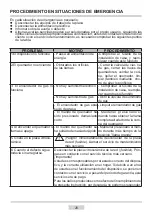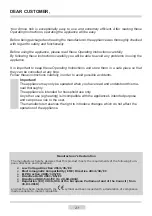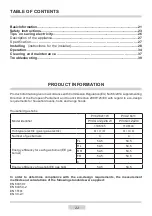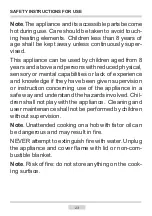
30
INSTALLATION INSTRUCTIONS
CAUTION!
Only a qualified person must connect the appliance to a liquid gas cylinder or
an existing system, following all safety regulations.
ENSURE
the connections are tight
.
Once you install the appliance, check all connections for leaks, for example using
soapy water.
Do not use fire to check the connections.
Important!
Each time you replace a reducer carry out technical inspection of the cooker that cov
ers gas valves and proper operation of the flame failure cut‑off device.
Tips for the installer
The installer must:
● Have appropriate qualification.
● Read the information on the nameplate or information sticker concerning the type
of gas, for which the appliance is intended. This information must be compared with
the gas supply specification at the place of installation.
● Check
• effectiveness of ventilation, i.e. exchange of air in the room.
• tightness of gas fittings.
• proper operation all the functional components.
● For proper operation of igniters and flame failure cut‑off device, adjust the position
of the gas knobs with the supplied washers,
• check the operation of igniters and flame failure cut‑off device,
• In the event of faulty operation, remove the knob, make adjustments by inserting a
washer (washers) on the valve pin,
• check the operation of igniters and flame failure cut‑off device,
•once adjusted, protect the system with a clamping washer and replace the knob.
● Provide the user with the gas hob installation certificate and give instructions on the
appliance operation.
The appliance has an R 1/2” threaded pipe connector to connect it to the gas system.
The LPG (propane‑butane) hob version has the connector terminated with a hose tip
∅
8 x
1 mm.
Gas supply hose should not touch the metal parts of the cover.
Summary of Contents for PVCG4.1ZpZtC
Page 40: ...IO TGC 0135 4 02 2018 ...



